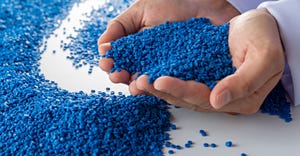Medical Snapshot: Medical disposables
June 1, 2007
Growth in demand for medical disposables such as syringes and intravenous devices is being met increasingly by contract manufacturers who specialize in medical products. |
High-volume disposables focus on both cost and quality in an expanding market environment.
Arguably the largest consumer of plastics in the medical market due to sheer volume, disposable products such as syringes, intravenous devices, luers, stopcocks, and other fittings appear poised for growth this year. According to Datamonitor (New York, NY), the global market for medical disposables is estimated to be worth close to $170 billion, while Freedonia Group (Cleveland, OH) projects the U.S. market at more than $60 billion and growing at 5.6% per year.
Disposables reap the benefits of increased demand that currently enshrouds all healthcare-related products. Factors include an aging population, a trend toward home healthcare, and an increased focus on cost reduction.
Hospitals remain the largest source of demand for these products, but home healthcare needs are on the rise for products such as prefilled inhalers, prefilled syringes, and dialysis delivery devices, according to a report from Freedonia. Nearly all of these products are injection molded, either by captive or custom operations. The report cites major OEMs in this market as Becton, Dickinson & Co., Johnson & Johnson, GlaxoSmithKline, Tyco International, Cardinal Health, Baxter International, Kimberly-Clark, 3M, Boston Scientific, and Hospira.
Growth in CM
IMM spoke with two medical contract manufacturing suppliers to find out more about this large subcategory of the overall medical market. Wolfgang Buehler, president of Magor Mold (San Dimas, CA) and co-owner of Apec (Baldwin Park, CA), sees overall growth rates of 7-10%. “We are living longer, but our general health is worsening,†he says. “This is driving demand for both established and new products as we encounter an older population and the growth of disease within younger populations as well.â€
Tom Podesta, VP, healthcare for Tech Group (Scottsdale, AZ), sees the market itself continuing to grow between 5% and 8%. “But when you include the continued drive to outsource components and assemblies,†he adds, “the contract manufacturing market should grow at double-digit rates.â€
In general, OEMs in this market rely increasingly on suppliers who can provide contract manufacturing services rather than run their own captive operations. Says Podesta, “Outsourcing complete assemblies continues to be the main driver, with numerous benefits to this approach that have been well documented. The key for most OEMs is to choose a partner that brings a comprehensive set of core competencies that align with the needs of the assembly. By doing so, the OEM is not only simplifying its supply chain and logistics but is also leveraging various core competencies from one supplier.â€
Cost as priority
Buehler sees overall part costs as the number one priority among OEMs today, which means that moldmakers and molders in the United States have a competitive advantage. “Medical disposables have long product life cycles, unlike consumer products, so you are able to amortize the mold over eight years. If you are depreciating a $400,000 mold over eight years and the mold produces 30 million parts per year, then the mold cost within the product is only 3% of the part cost. Over five years, even at 50% capacity, about 5% of the part cost is mold depreciation in high-volume medical disposables. Our focus is on the 95%, reducing scrap and increasing yield, decreasing cycle, and increasing time between maintenance.â€
There is no competition coming out of Asia for these types of molds, he explains—only from Europe. “There is plenty of room for growth in the United States. Low cost will mean manufacturing these parts with the least amount of labor. Twenty million stopcocks assembled in China may require 20 employees, vs. doing it with automation. There are high-quality parts coming out of China but they come with a high scrap rate because they are inspecting quality into the product. As material costs rise, the cost of this high scrap rate makes these suppliers less competitive.â€
At Tech Group, Podesta says they are also seeing a number of next-generation products that incorporate the latest technologies to drive cost out while simplifying the design. Examples include the use of multishot molding to reduce assembly steps, inline assembly techniques, improved and faster bonding techniques, and improved and faster printing stations. “By tackling numerous improvements in one product redesign, customers are reaping huge benefits,†he adds.
Says Buehler, “Many disposable components are assembled into costlier units. Quality inconsistencies on a $.02 part (which is being assembled into a $1.20 device) can yield higher scrap rates at the finished assembly level. By improving component quality, which may come at a higher price, you can still reduce the cost of the overall device by reducing scrap and therefore contribute to your customer’s bottom line when everything is tallied up. The cost of the end product is what the molder needs to look at. With no rejects, customers save money.â€
His advice to molders? “Anticipate the customer, and always keep them in production. Don’t shut down the line and the half cent more they may pay you per part will be a real deal. Make sure also that you never get into a backorder situation. If the hospital ER needs more IV sets and your customer can’t ship them because you haven’t supplied them yet, they will buy from another OEM because the need is critical.â€
You May Also Like


